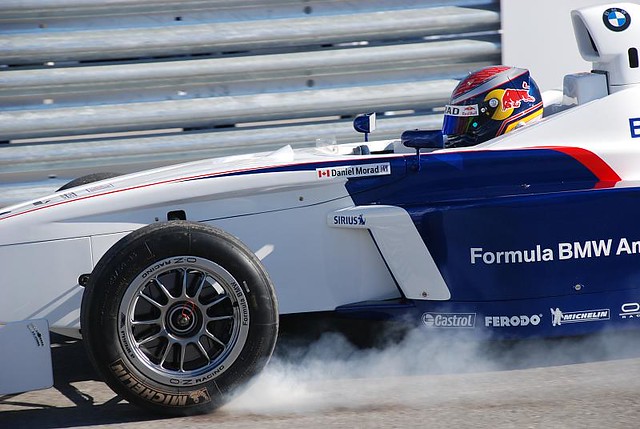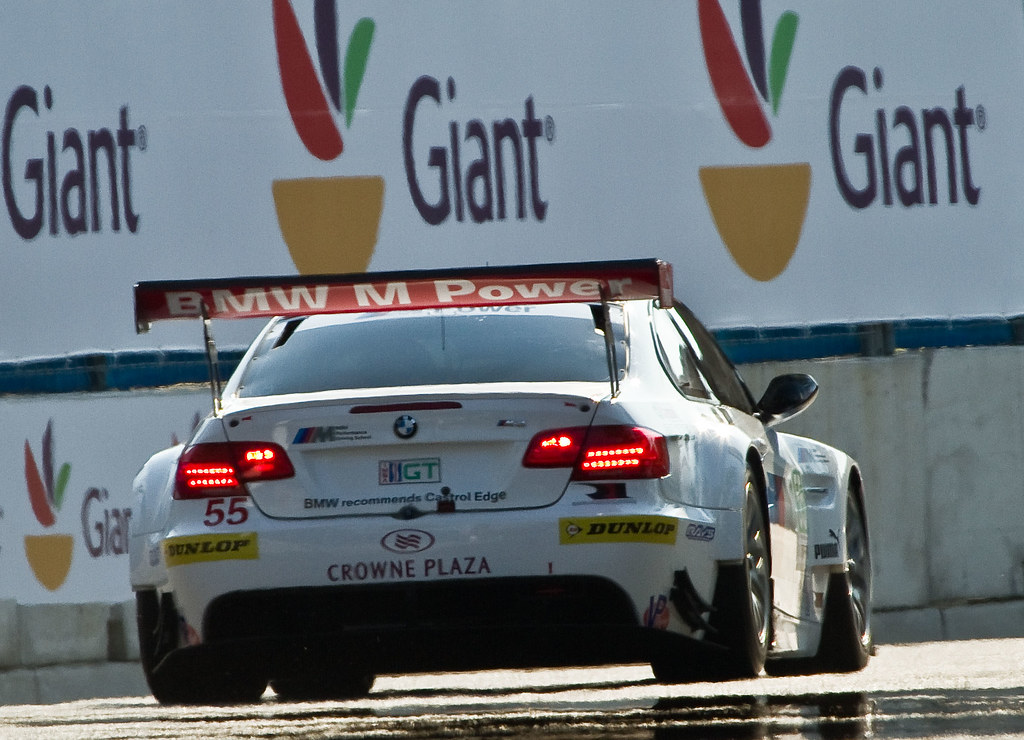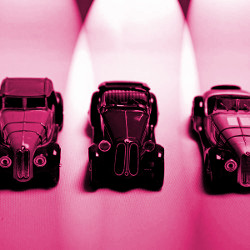BMW Sauber: How BMW Fell Out Of Love With F1
https://bvzine.com/link/bmw-sauber%3A-how-bmw-fell-out-of-love-with-f1
Like most road car manufacturers that decide to dip their toes into Formula One, BMW's history in the so-called pinnacle of motorsport is... a bit patchy, to say the least.
The pattern (probably) goes like this. One of the suits in company HQ decides that getting involved in F1 would be a great idea. The company makes a big media fanfare about it, invariably claiming that the race team will make some huge technological leap forward which is somehow going to filter down to consumer vehicles and make everything incredible. The flames of enthusiasm burn bright for a few years, until the accountants realize F1 is a serious money pit and force a withdrawal. This decision is supposed to allow the company to reallocate funds to its engineering team, helping it make some huge technological leap forward which is somehow going to filter down to consumer vehicles and make everything incredible. There's then a brief hiatus, the accountants presumably get distracted and the suits decide to make a triumphant return to the sport.
BMW's no different. After a few one-off entries as an engine supplier back in the black-and-white era and an aborted attempt to enter the 1969 German Grand Prix as a constructor, BMW made its first big move into Formula One at the start of the 80s. A deal was struck that would see the Brabhams — driven by Riccardo Patrese and reigning Drivers' Champion Nelson Piquet — powered by BMW's inline-four M12/13 turbo engines from the 1982 season.

Brabham's first season with BMW would be totally unremarkable were it not for Patrese making F1 history by completing the sport's first refuelling pitstop. Although his Brazilian teammate would also break new ground the following season as the first to win a Drivers' Championship with a turbocharged engine, the period would prove ultimately underwhelming, with BMW withdrawing from the sport by the time the 1989 turbo ban rendered its engines obsolete.
It would be a decade before BMW announced its intention to return to F1. The Williams team had been the dominant force in the sport through the mid-90s, racking up four drivers' titles and five constructors' titles between 1992 and 1997 using a string of Renault engines. The French company's decision to take a step back from F1 (there's that pattern I told you about) at the end of the 1997 season left a gaping hole that BMW was happy to fill.
The BMW Williams partnership got off to a slow, but encouraging, start. In the 2000 series — the first when BMW's new three-liter V10 engine was ready for use — the team finished third in the Constructors' Championship with 36 points, a whopping 116 behind second-placed McLaren. The team more than doubled its points tally the following season, and by 2003 was mounting a genuine challenge on both the Drivers' and Constructors' Championships. Going into the penultimate race of the season in Indianapolis, the team topped the Constructors' Championship standings, with lead driver Juan Pablo Montoya trailing eventual Drivers' Champion Michael Schumacher by only three points. A disastrous final two races, in which BMW Williams picked up three points from a possible 36, saw the team finish second in the Constructors' Championship, as Montoya slipped to third place in the Drivers' Championship.

The 2003 season was as good as it got for BMW Williams; the team would only pick up one race win over the next two years, ending 2005 in fifth place of 10 teams.
Blaming the failure on the Williams chassis, BMW initially made a bid to buy out the team and bring development in-house. After being rebuffed by the Williams ownership, BMW shifted its attention to Switzerland-based Sauber. Though the team had spent much of its existence languishing towards the back of the grid, it had recently completed construction of a state-of-the-art wind tunnel at its Hinwil HQ, helping cement its reputation as one of the better organized privateer teams. More importantly, with team founder Peter Sauber struggling to keep up with his team's growing operating budget, he was ready to sell.
BMW eventually bought 80% of the Sauber team for the 2006 season, renaming it BMW Sauber and introducing the signature blue and white livery that had been in use by BMW Williams for the previous five years. For an added touch of continuity, former Williams driver Nick Heidfeld also followed BMW to Sauber, replacing the departing Felipe Massa alongside former champion Jacques Villeneuve.

Soon after taking control of the team, the BMW Group announced a new partnership with Intel, which would see the Intel logo feature prominently on the BMW Sauber car from the 2006 season. Both sides played up the role the experience in Formula One would play in advancing technology in road vehicles, not just for the driver, but for the engineers and designers building the cars. BMW had bought their way to Sauber's wind tunnel, but Intel promised computer simulations could replace physical tests, both for the track and the road.
Whether the effects of this partnership really made any difference for BMW Sauber's performance on the track is questionable. And that's before anybody starts thinking about the difference it may (or may not) have made to the cars in the neighbourhood showroom.
In Sauber's first season under BMW ownership, Nick Heidfeld finished third at the Hungarian Grand Prix, and Robert Kubica repeated the feat two rounds later at Monza — the first time Sauber had made the podium twice in one season. Consistency was still an issue, though; over the 18 rounds of the season, BMW Sauber only got both drivers to a points finish three times. The team ended the 2006 season in 5th, just as BMW Williams had the previous season. Shifting from an engine supplier to a constructor wasn't paying any dividends for BMW just yet.
The 2007 season was a step forwards for the team on all fronts. Not only did Heidfeld go one better than his third-place finish the previous year — finishing second in Montreal — the team's reliability and consistency improved drastically, with both drivers regularly bringing back points. Combined with McLaren's disqualification for industrial espionage, it was enough to see BMW Sauber finish the season second in the Constructors' Championship, Sauber's highest finish to date.

It was the 2008 season, however, that would prove to be pivotal. BMW Sauber started strongly, with a podium finish in each of the first three races giving them an early lead in the Constructors' Championship standings. The Canadian Grand Prix in round seven saw Sauber not only winning their first — and as of yet only — race, but achieving a one-two finish, with Kubica leading Heidfeld home. They would be two of 11 podium finishes that season, as the team made a record 136 points to finish third in the Constructors' Championships. Kubica did enough to finish fourth in the drivers' standings, level on points with former champion Kimi Räikkönen in the Ferrari.
What seemed like a promising period for the team wouldn't last, though. Having achieved their goal of a race win in 2008 and cautious about new rule changes for 2009, BMW Sauber decided to shift its focus to preparing for the following season. Only three points behind the leaders in the constructors' standings after seven rounds, come the end of the season the team was 37 points off the pace.
The team's future-focused approach didn't really work out too well, though. Although the opening round of the 2009 saw Kubica in second place with three laps to go, a collision with Sebastian Vettel saw him finally classified 14th. In the following round in Malaysia, Heidfeld finished second... except he didn't actually finish, with the race being rained off barely halfway through.
That was as good as it would get for BMW Sauber, spending most of the season on the back half of the grid. BMW, perhaps having realized that staying competitive in F1 season after season was no mean feat, seemingly lost interest. With the team sitting 8th in the Constructors' Championship after the 2009 European Grand Prix, BMW announced its intention to withdraw from the sport at the end of the season, citing poor performance. The continued presence of Sauber on the F1 grid looked to be under threat as a proposed sale to shell company Qadbak Investments collapsed, eventually encouraging Peter Sauber to make an 11th hour bid to regain full rights to the team he founded. Though the FIA's Concorde Agreement meant that the BMW Sauber name would live on for one more season — albeit it with no actual BMW involvement — 2010 was the first time in the 21st century an F1 season would pass without a BMW-powered car on the grid.
It was, in many ways, a sorry end for BMW on motorsports top table. The promise shown in the 2007 and 2008 seasons had fizzled out, and BMW Sauber ended its final season with the exact same number of points — 36 — as it had finished its first season with. There was, you might say, no progress made.

Of course, BMW hasn't exactly left racing behind. The company's motorsport division still plays a part in a number of touring car and GT championships, either directly or by offering factory support to privateer teams. BMW will also be providing electric powertrains for the Formula E series, once again with the promise that these technological advances will filter down to BMW's electric and hybrid consumer vehicles and make everything incredible. Only time will tell how long these latest flames of enthusiasm will burn for.
 By
By